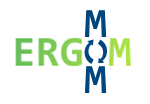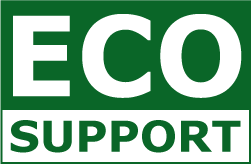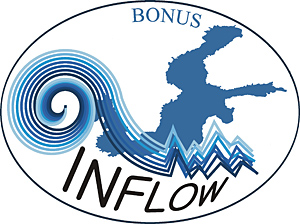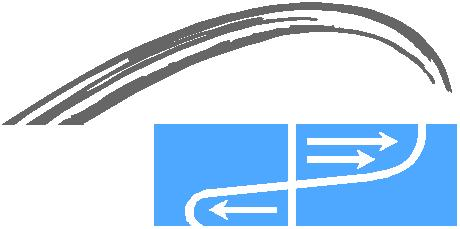
Projects
Current projects
BaltCICA
BEIBU
|
Status of the marine environement in the Beibu Gulf, South China Sea, and
its develpoment during the Holocene under the course of natural and
anthropogenic influence The project aims at the balancing of meso-scale to long-scale energy and mass fluxes in the Beibu Gulf as a result of natural and anthropogenic forcing. Subject of investigation are the changes in subrecent deposits, nearshore matter input, the decomposition of organic matter as well as polutants and elemental fluxes. Geological and seismic studies focus on the holocenic history of sedimentation, sediment input and tektonic processes, and on the impact of land use in the coastal zone. |
||
BEST
Pathways of nutrients and timescales of nutrient transports in the Baltic SeaThis project investigates the spatial pathways of nutrients from multiple inputs into the Baltic Sea as well as their distribution in the food web. Another subject is the influence of biological processes on the spreading of nitrogen and phosphorus. Therefore the existing numerical ecosystem model ERGOM has been expanded by a tool that allows for the tracing of nutrient sources and the residence time of nutrients in the system. |
||
BONUS-ECOSUPPORT
BONUS-INFLOW
FEHY
GENUS
 |
Geochemistry and Ecology of the Namibian Upwelling System GENUS intends to clarify relationships between climate change, biogeochemical cycles, and ecosystem structure in the large marine ecosystem of the northern Benguela / Namibian Coast (SW Africa). Read more... |
|
IOW Baltic Sea Model
 |
We aim at improving the numerical environment of IOW's numerical Baltic Sea circulation model which is based on the GFDL-licensed Modular Ocean Model (MOM), in order to integrate new modules and maintain the model code. A key element is the digitised bottom structure (topography) of the Baltic Sea. Among other things, detailed knowledge of the shape of the Baltic Sea floor with its narrow channels in the Danish Belt Sea and deep basins in the Baltic Proper is important for simulating the spreading of water masses. Read more about IOW's digital topography of the Baltic Sea, IOWTOPO. |
|
RADOST
Past projects
- BENEFIT: BENguela Environmet Fisheries Interaction & Training
(01.01.1997-31.12.1999)
- Box and 1-D zooplancton models
Basic funding (01.01.1999-31.12.2000)
- Coupling of circulation models and biogeochemical models
Basic funding (01.01.1994-31.12.1997)
- Dynamics of the Angola-Benguela Front
DFG (01.01.1997-31.12.1999)
- Development of a box model for the cycles of carbon and nutrients in the Gotland Basin
Basic funding (01.01.1999-31.12.2001)
- DYNAS I: Dynamics of natural and anthropogenic sedimentation
Federal Ministry for Education and Research (01.06.2000-31.05.2003)
- DYNAS II: Dynamics of natural and anthropogenic sedimentation
Federal Ministry for Education and Research (01.01.2004-31.12.2005
- ERGOM: First generation of IOW's Baltic Sea numerical ecosystem model
BMBF (01.01.1999-31.12.2002)
- Expedition Meteor M48/3: Eastern boundary circulation in the south-eastern Atlantic Ocean
DFG (01.01.2000-31.12.2000)
- IBSEN: Integrated Baltic Sea Environmental Study: Analysis and Simulation of Hydrological and Ecological Variability in the last 1000 years
BMBF (DEKLIM) (01.08.2001-01.07.2004)
- IKZM-Oder: cluster project for Integrated Coastal Zone Management in the Oder river's estuary
BMBF (01.05.2004-30.04.2007)
- Improvement of the Modular Ocean Model
Basic funding (01.01.1999-31.12.2001)
- MITEC: Improved microstructure measurement technologies for marine near surface flux studies
EU (01.01.1998-31.12.1999)
- A model-grid-based climatological data base for the Baltic Sea
BMBF (01.01.1999-31.12.2001)
- Modelling the carbon budget in the Arkona Sea
HLRN (01.01.2002-31.12.2004)
- Modelling of sediment dynamics in the Western Baltic Sea
Basic funding (01.01.1997-31.12.2000)
- Modelling suboxic conditions in the Benguela Upwelling System
HLRN (01.01.2004-31.12.2006)
- Modelling of hydrographical and biogeochemical key processes in the Benguela Upwelling System
HLRN (01.01.2010-31.03.2011)
- NAMIBGAS: Eruptions of methane and dihydrogensulfide from continental shelf sediments off Namibia
BMBF (01.01.2004-31.12.2007)
- OXDYN: Dynamics of oxygen depletion
DFG (01.01.2003-31.12.2009)
- SALPRO: Spreading and mixing of saline water in the Arkona Basin
DFG (01.01.1998-31.12.2001)
- Sediment transport models for the Western Baltic
German armed forces research facility for underwater sound and geophysics (FWG) (01.06.2003-01.08.2003)
- SIBIK: a satellite-based interpreting and assessment tool for the coastal monitoring of Mecklenburg-Western Pomerania
BMBF, LUNG (01.01.2001-31.12.2003)
- Spreading paths of deep water in the Baltic Proper
IOW basic funding (01.01.2002-31.12.2005)
- ThAD: Theory of upwelling dynamics
IOW (01.01.2004-31.12.2006)
- ThMS: Theory of marine ecosystems
IOW (01.01.2004-31.12.2006)


